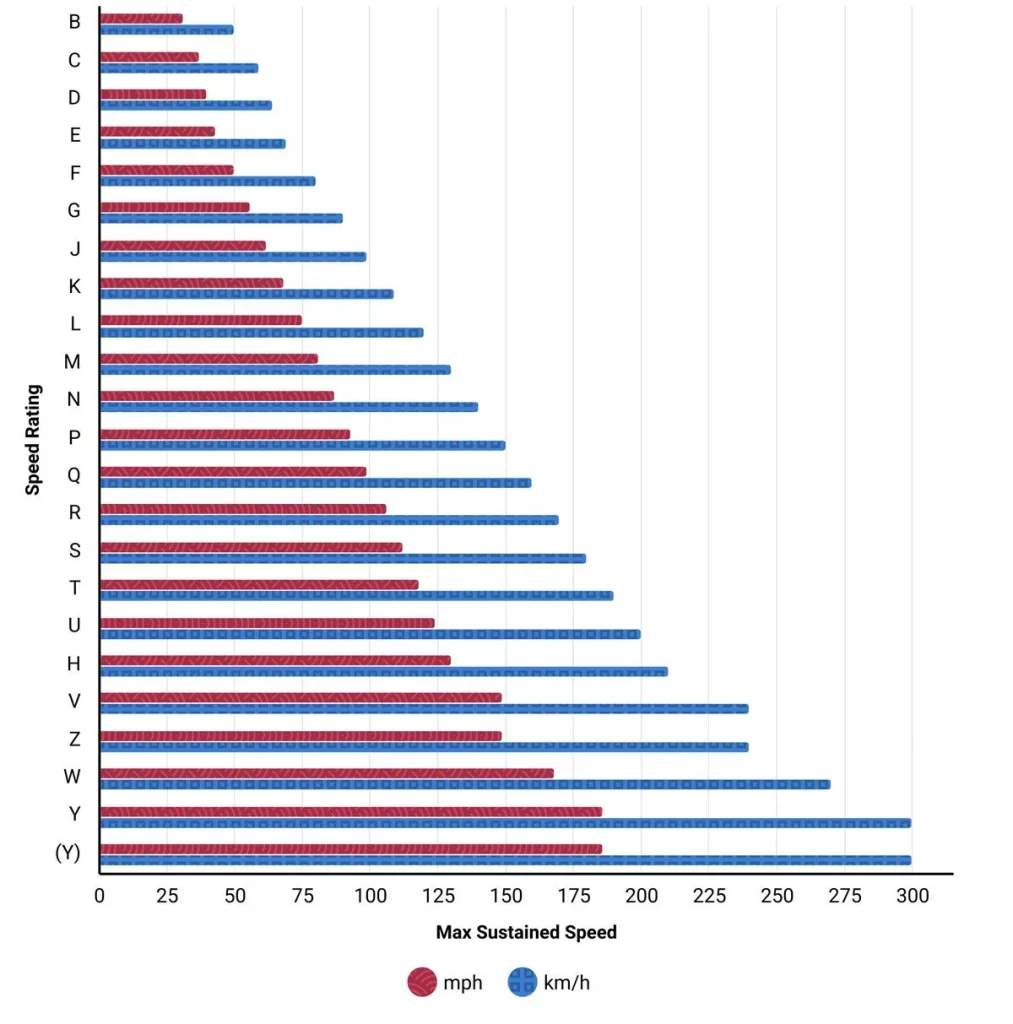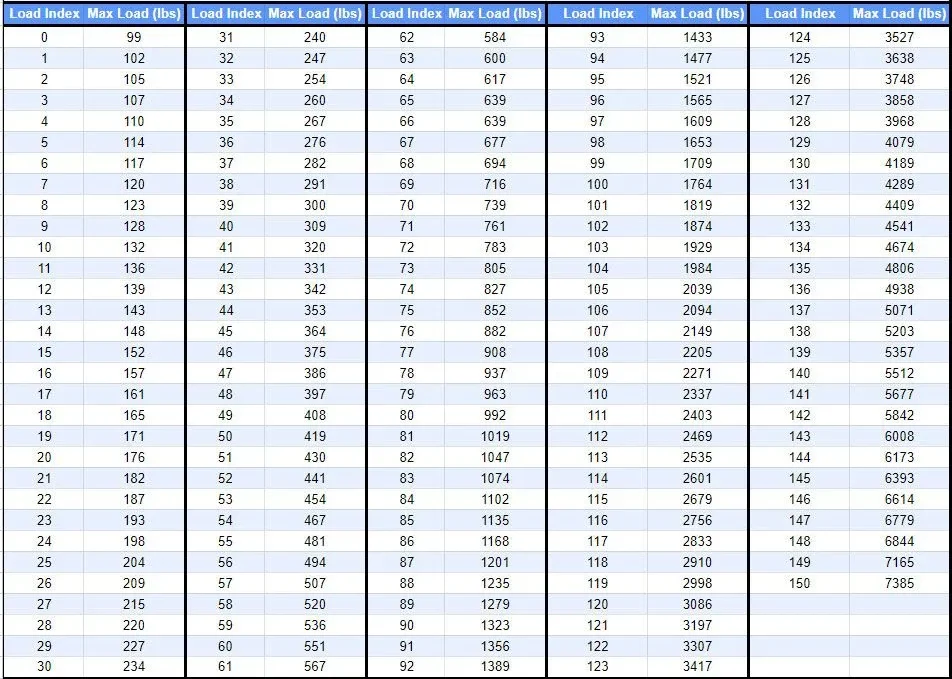Tires are more than just black rubber rings on your wheels – they are critical to your car's safety and performance. Your tires are the only part of the vehicle that touches the road. Each tire contacts the pavement on a rubber patch only about the size of your hand. On that small patch, everything depends: your car's ability to grip for acceleration, steer through turns, and come to a stop when you brake.
Even the most powerful car won't go anywhere without traction from its tires. This is why having the right tires in good condition is so important. Good tires help ensure better handling, shorter braking distances, a smoother ride, and even improved fuel efficiency. Conversely, worn or improperly inflated tires can make driving unsafe. In short, tires matter because they are literally where “the rubber meets the road” for every drive you take.
Basic Anatomy of a Tire
A tire isn't a solid piece of rubber – it's made of several layers and parts, each with a role to play. The outermost part is the tread, the thick rubber that meets the road surface to provide traction. You'll notice grooves in the tread (called tread patterns) that channel water and improve grip on different surfaces.
Next is the sidewall, which is the side of the tire connecting the tread to the wheel rim. The sidewall is made of a tough rubber compound that stabilizes the tire, absorbs bumps, and protects the inner layers from damage.
Beneath the tread rubber, tires have layers of fabric and metal plies that form the tire's internal carcass (or frame). These plies, often made of polyester or rayon cords, give the tire its shape and strength while allowing flexibility.
Most modern tires also contain steel belts embedded under the tread. These belts are like steel ribbons that wrap around the tire; they reinforce the tread area, adding strength and stability so the tire holds its shape at high speeds.
Finally, along the inner edges of the tire are the beads – ultra-strong steel hoops (encased in rubber) that clamp firmly against the wheel rim. The bead ensures an airtight seal with the rim and keeps the tire securely mounted. All these components work together so the tire can support the car's weight, maintain its shape, and perform reliably throughout life.
Tire Types and Categories
Just as vehicles come in different types, tires come in various categories to suit different driving needs and conditions. Here's a brief overview of the most common tire types (we'll have detailed articles on each type if you want to learn more about tire categories):
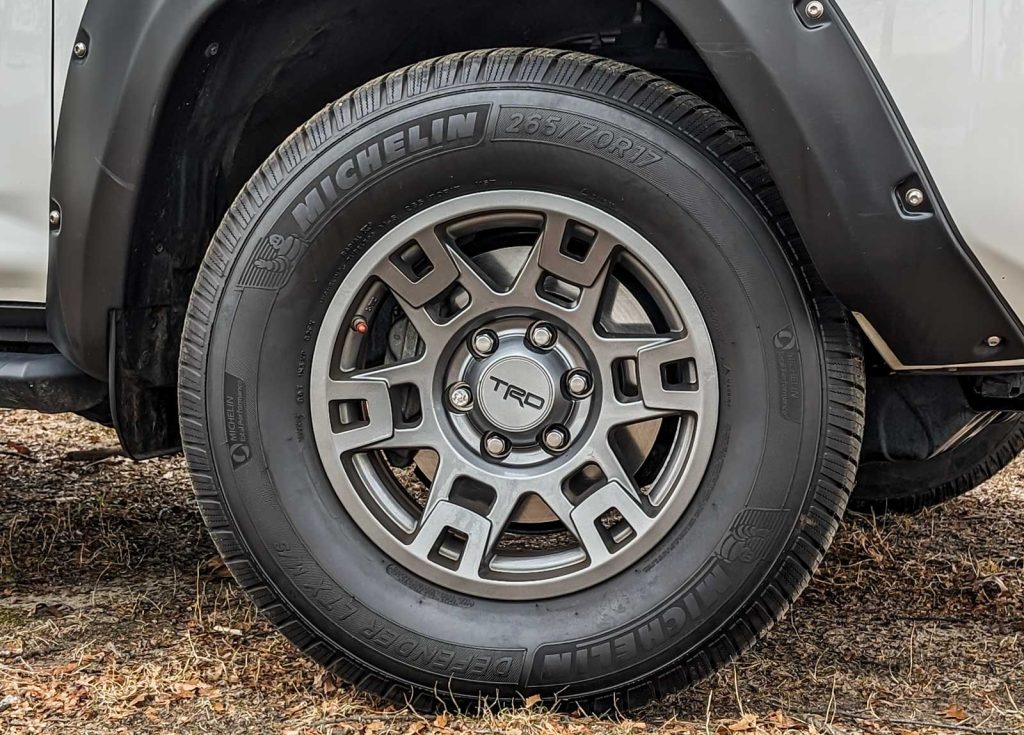
- All-Season Tires: These are the most popular tires on everyday vehicles. They are designed to handle various conditions, from dry and wet roads in the summer to light snow in the winter. They provide a balanced performance and typically have a longer tread life for year-round use.
- Summer (Performance) Tires: Summer tires are for warm weather and performance driving. They deliver excellent grip and handling on dry and rainy roads in spring, summer, and fall. However, summer tires should not be used in cold winter conditions – their rubber is formulated for warm temperatures, so they can get too hard and lose grip in near-freezing weather. If you drive a sports car or prioritize crisp handling, summer performance tires might suit you (in the appropriate climate).
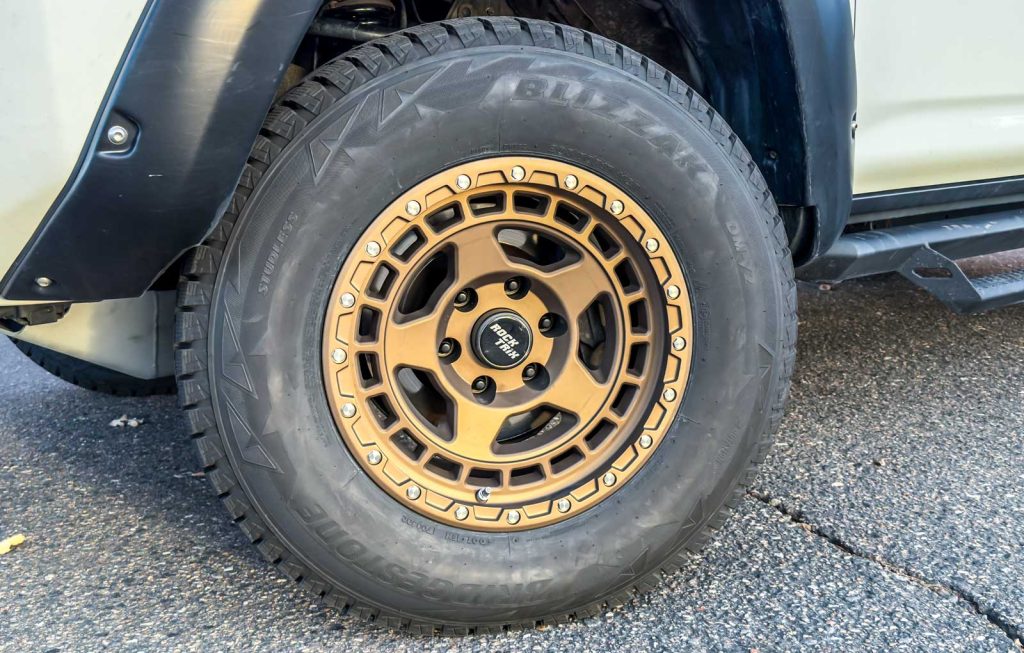
- Winter (Snow) Tires: Winter tires are specialized for cold weather, snow, and ice. They use a softer rubber compound that stays flexible in low temperatures, and they have tread patterns with lots of biting edges (sipes) for traction on snow and slush. Winter tires are marked with the mountain/snowflake symbol, meaning they meet standards for severe snow service. These tires can dramatically improve safety and control in winter conditions, but because of their soft rubber, they aren't meant for year-round use (you'd switch back to all-season tires or summer tires in the warm seasons).
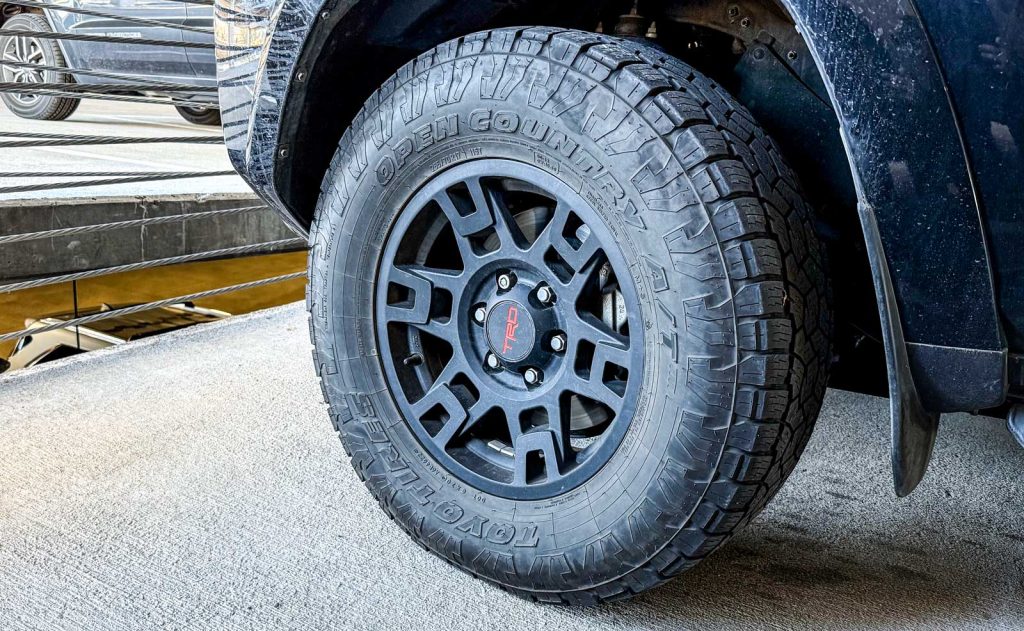
- All-Terrain & Off-Road Tires: If you drive a truck or SUV and enjoy off-road adventures, all-terrain or mud-terrain tires are designed for you. All-terrain tires have chunkier tread blocks and reinforced construction to handle dirt, mud, and gravel while still usable on the pavement. They give you excellent grip off-road, though they may produce more road noise and slightly less fuel efficiency on highways. Mud-terrain tires (a more aggressive sub-category) go even further with deep treads and sidewall lugs for extreme off-road conditions. These off-road-focused tires aren't necessary for everyday drivers but make a huge difference for off-road enthusiasts. (If you're curious, we will have a full article on off-road tire types and how to choose the right one for your 4×4.)
Remember, there are other niche categories (like touring tires for an extra smooth ride, high-performance variants of all-season tires, run-flat tires that can drive temporarily when punctured, etc.), but the four categories above cover the basics for most drivers. The key takeaway is that different tires are made for different conditions – there's no “perfect tire” for everything. Consider the typical weather and roads you drive on, and choose a matched tire type.
Reading a Tire's Sidewall
The side of a tire (the sidewall) isn't just a blank surface – it's filled with numbers and letters that tell you important information about the tire. If you look at your tire's sidewall, you'll see the brand and model name of the tire, as well as a long code like P215/65R16 95H and other markings. All those symbols can seem like gibberish at first, but once you know how to read them, they make perfect sense! The sidewall serves as the tire's ID card, listing its key specifications and even the date it was made.
Let's break down the typical things you'll find on a tire sidewall:
- Tire Size Code: This is the string of numbers and letters (P215/65R16 95H). It tells you the tire's size, construction, and performance ratings. We'll explain this code in the next section (“Tire Sizes and What They Mean”), but in short, it includes the width, aspect ratio, construction type, wheel diameter, load index, and tire speed rating.
- Tire Type Letters: The size code often starts with a letter or two indicating the tire's type. For example, “P” stands for Passenger car tire, “LT” stands for Light Truck tire, and if there's no letter at the beginning, it might be a European metric tire. These prefixes tell you what kind of vehicle the tire is meant for.
- Load Index & Speed Rating: After the main size numbers, you'll usually see a number and a letter (like 95H in our example). The number is the load index, a code for how much weight the tire can safely carry. The letter is the speed rating, which indicates the maximum speed the tire is designed to handle (under safe conditions). For instance, an “H” speed rating means the tire can safely sustain speeds up to 130 mph (210 km/h). There's a range of speed rating letters from N, Q, S, T, H, V, and Y (each corresponds to a specific top speed). Don't worry about memorizing them – know that this letter is important for matching your tire to your vehicle's performance.
- DOT Date Code: Every tire has a Department of Transportation (DOT) code that includes the manufacture date. It's typically a series of letters and numbers ending in four digits, where the last four digits indicate the week and year the tire was made. For example, “3421” would mean the tire was made in the 34th week of 2021. This is useful for knowing the age of your tires.
- Other Markings: You might see letters like M+S (Mud and Snow, indicating an all-season tire suitable for moderate winter conditions) or a mountain snowflake symbol ❄️ (indicating a true winter tire). You may also see a treadwear rating, traction rating, and temperature rating on some tires (these are part of the Uniform Tire Quality Grading system – e.g., you might see something like “400 A A” indicating a treadwear grade of 400, with “A” traction and “A” temperature performance). We won't dive deep into those here, but just be aware they exist. They let you compare how long a tire might last and how well it performs in traction and heat resistance. You can read up on the system on the Uniform Tire Quality Grading System page for a better understanding of the system used.
As you can see, a tire's sidewall is packed with info. It might seem like a secret code, but now you know what it means. Knowing how to read it is handy when shopping for new tires or checking if a tire meets your car's requirements.
Tire Sizes and What They Mean
The tire size is one of the most important things printed on the sidewall. Tire size is usually expressed with numbers and letters, like 225/60R16 98H or something similar. Initially, it doesn't look very clear, but each part of that code has a specific meaning. Let's use an example to explain:
Suppose you see a tire marked P215/65R16 95H. Here's what each part of that means:
- P – This letter at the beginning tells us the tire type. “P” means a Passenger car tire (designed for regular passenger vehicles). You might also encounter “LT” for Light Truck tires or no letter (which could indicate a Euro-metric passenger tire). In our example, P = passenger tire.
- 215 – This is the tire's width in millimeters. Specifically, it's the width from sidewall to sidewall. So, this tire is about 215 mm wide. A larger number here means a wider tire.
- 65 – This is the aspect ratio, the tire's sidewall height as a percentage of its width. In this case, 65 means the sidewall height is 65% of 215 mm. That comes out to roughly 140 mm tall sidewalls. A smaller aspect ratio (40 or 50) would mean a shorter, sportier sidewall, whereas a higher number (70 or 75) means a taller, cushier sidewall. So 65 is a middle-of-the-road profile – not very low, not extremely tall.
- R – This letter tells you about the tire's construction. R means Radial construction, which is by far the most common today. Radial tires have layers of fabric cords running at 90 degrees to the direction of travel (basically radially across the tire), which gives them a good combination of strength and flexibility. (If you ever see a “D” instead, that would mean a bias-ply tire, which is old-fashioned and rare in passenger cars now.)
- 16—The next number is the wheel diameter (rim size) that the tire fits in inches, So this tire fits a 16-inch wheel. It needs to match your wheel size exactly. (You can't put a 16-inch tire on a 17-inch rim.) Nowadays, common passenger car wheel sizes range from about 14 inches on very small cars to 20+ inches on sporty or luxury cars.
- 95H – Finally, at the end of the size code, we have 95H, which, as mentioned earlier, comprises two parts. 95 is the load index, and H is the speed rating. A load index of 95 corresponds to a maximum load of 1,521 pounds (690 kg) per tire (you'd need to look up a load index chart to get the exact weight) – the main point is that higher numbers carry more weight. The speed rating “H” indicates this tire is rated for up to 130 mph. The load index and speed rating should meet or exceed the requirements for your car (the car manufacturer specifies a minimum). Usually, when buying tires, you don't have to calculate anything – make sure the new tire's code matches the specs of your old tires or the car's manual.
So, in summary, P215/65R16 95H can be translated into plain English as: “a passenger car tire, 215 millimeters wide, with a sidewall height 65% of that width, radial construction, to fit a 16-inch wheel, with a load index of 95, and a speed rating of H.” Once you break it down, it's not so scary!
Most tire shops and online tire sellers will list the tire size in this format. If you're unsure what size your car needs, you can check your driver's door jamb sticker or the owner's manual, where the manufacturer lists your vehicle's recommended tire size and specs. Sticking to the correct tire size and ratings is important for safety and proper performance.
Tire Performance Characteristics
Here are some key tire performance factors to be aware of:
- Traction (Grip): This refers to how well a tire grips the road, especially during braking and cornering. A tire's traction is affected by its rubber compound and tread pattern. In the U.S., street tires have a traction rating as part of the UTQG system (often rated AA, A, B, or C). For example, an “A” traction rating indicates a tire with good wet braking traction on asphalt and concrete test surfaces. In simpler terms, a tire with better traction will stop your car more quickly on wet roads. When shopping, you'll see some tires marketed as “high performance” or “ultra-high-performance” – these typically prioritize grip (especially in dry and wet conditions) but might wear out faster.
- Treadwear (Longevity): This is how long the tire is expected to last. Tires come with a treadwear grade in the UTQG ratings (e.g., 300, 500, 800, etc.). A higher number means the tire should last longer than a lower number. For instance, a tire rated 400 is expected to last approximately twice as long as one rated 200 under the same conditions. Remember, this is a comparative rating, not a guarantee of exact mileage. Real-world tire life will depend on how and where you drive (and how well you maintain them). If you prefer a tire that lasts a long time, look for a high treadwear rating or warranties that indicate high mileage (some touring tires are warranted for 60,000+ miles, for example). But note: sometimes the trade-off for very high mileage is slightly less grip since a harder rubber compound might be used.
- Speed Rating: As discussed earlier, the speed rating (a letter like T, H, V, W, etc.) indicates the maximum speed the tire can sustain safely. It measures the tire's ability to handle heat and stress at high speeds. Common speed ratings for everyday cars include S (112 mph), T (118 mph), H (130 mph), V (149 mph), and higher for performance cars. Even if you never drive at those speeds, the speed rating correlates with a tire's performance characteristics. Generally, a higher speed-rated tire might handle better (stiffer construction) but could ride a bit firmer and wear faster. Using at least the speed rating recommended by your car's manufacturer is important. For instance, if your car comes with H-rated tires, you should replace them with H or above to maintain the intended performance.
- Ride Comfort & Noise: This is not an official “rating” on the tire, but worth mentioning. Tires can differ in how comfortable they feel and how much road noise they produce. A touring tire is typically optimized for a smooth, quiet ride. An aggressive performance tire or off-road tire might be noisier or rougher. Manufacturers often use special tread designs or rubber patterns to minimize noise. When choosing tires, you can often find user reviews or descriptions that mention ride comfort and quietness. If a cushy, quiet ride is your priority, you might sacrifice a bit of handling sharpness by choosing a tire designed for comfort (and that's perfectly fine for everyday driving!).
- Temperature Resistance: Another UTQG rating, temperature (graded A, B, or C), measures the tire's ability to dissipate heat under sustained high-speed operation. “A” is the highest, meaning the tire can run cooler and is less likely to overheat at high speeds. This is mainly a concern for performance or heavy-duty usage – most regular tires are rated A or B, which is sufficient for normal driving.
The main idea here is that tires involve trade-offs. A tire that excels in one area (say, ultra-sticky grip for sports car handling) might give up something in another area (like tread life or comfort). When picking tires, think about what matters most to you – do you want a tire that lasts a long time? One that hugs the road in sharp turns? One that is quiet on your daily commute? Manufacturers try to balance these traits, and our future articles will dive into comparisons. Just remember that things like traction, treadwear, and speed rating are handy ways to compare tire performance at a glance.
Tire Maintenance Basics
Once you have good tires on your car, taking care of them is crucial to keep them performing well and lasting as long as possible. Luckily, basic tire maintenance isn't complicated. Here are the fundamentals every driver should know:
- Check Tire Pressure Regularly: The most important maintenance step is to inflate your tires. Tires naturally lose air over time (about 1–2 psi per month and more when the temperature drops). If tires are underinflated, your car won't handle or brake as well, the tires will wear out faster on the edges, and you'll waste fuel due to higher rolling resistance. Overinflation isn't good either – it can make the ride harsh and wear the center of the tread. Check your tire pressure at least once a month (and before long trips) using a reliable tire gauge. Do it when the tires are “cold” (the car hasn't been driven recently) for an accurate reading. Compare the reading to the recommended pressure listed on your driver's door jamb sticker or in the owner's manual (for most passenger cars, it's around 32-35 psi, but follow your specific vehicle's recommendation). Adjust with an air pump if needed. Proper tire pressure ensures optimal handling, life, and fuel efficiency.
- Rotate Your Tires: Tire rotation means swapping the positions of your tires (for example, moving the rear tires to the front and vice versa, sometimes in a cross pattern) periodically. We do this because tires can wear at different rates depending on their position on the car. For instance, on a front-wheel-drive car, the front tires typically wear faster (because they do the steering and carry more weight from the engine). By rotating tires, you ensure they wear more evenly, so one tire doesn't become bald while others still have tread. A common rule of thumb is to rotate your tires about every 5,000 to 8,000 miles or roughly at every other oil change. Many people do it at every oil change to keep it simple. Regular rotations can extend tire life significantly. When you get your tires rotated, it's also a good opportunity for the shop to rebalance them if needed (to prevent vibrations).
- Wheel Alignment: Alignment refers to adjusting the angles of your car's wheels to point straight and true according to the manufacturer's specs. If your alignment is off (say, after hitting a big pothole or curb), the tires might tilt or point slightly inward/outward, which can cause uneven tire wear. For example, a misaligned wheel can scrub one edge of the tire more, wearing it down faster. Signs of bad alignment include the car pulling to one side or an off-center steering wheel when driving straight. It's a good idea to check your alignment periodically or whenever you notice those signs or install new tires. Proper alignment will prevent premature tire wear and ensure your car handles correctly. This helps your tires last their full lifespan.
- General Inspection and Care: Now and then, give your tires a visual once-over. Look for any cuts, bulges, or nails in the tread. Remove any small stones stuck in the grooves. Ensure the valve caps are on (they protect the valve). Also, keep an eye on tread depth (more on that in the next section about replacing tires). If you notice anything odd, like a bubble in the sidewall or a tire consistently losing air, have a tire professional check it out. It's always better to catch a problem early. Remember, poor tire maintenance can lead to flats or even blowouts, which are dangerous and costly. A little proactive care goes a long way in preventing trouble.
Follow these basic maintenance steps to protect your safety and your wallet: maintain the right air pressure, rotate the tires, and ensure proper alignment. Your car will handle better, and your tires will last longer.
Signs Indicating that You Need New Tires
How do you know when it's time to replace your tires? Tires don't last forever; driving on worn-out or damaged tires can be very dangerous. Here are some common signs that you may need new tires (even if just one of these is true, it's worth getting your tires inspected or replaced – we'll also have a detailed guide on when to replace tires):
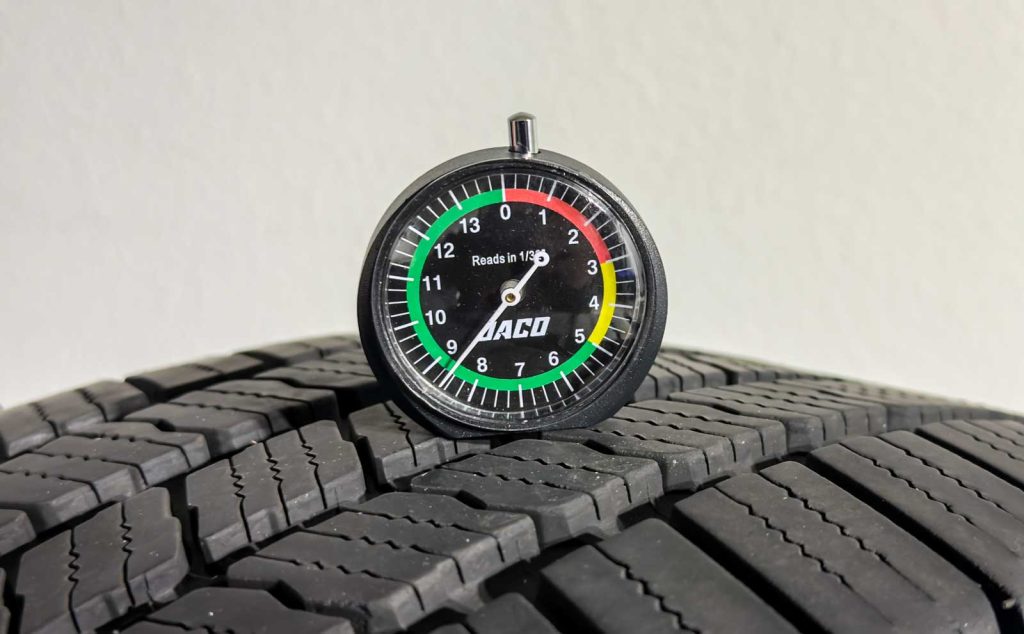
- Worn Tread Depth: This is the #1 indicator. Your tire treads should never be allowed to wear down to a bald state. As the tread wears out, the tire loses traction (especially on wet roads) and becomes prone to punctures. A quick test is the “penny test.” Take a penny and insert it into a tread groove with Lincoln's head facing down. If you can see the top of Lincoln's head, the tread is very low – too low for safe driving (this roughly means below 2/32 of an inch of tread remaining, which is the legal minimum in many places). New tires typically have 10/32″ or more tread depth. Many tires also have tread wear indicator bars – little bars in the grooves that flush with the tread surface when only ~2/32″ is left. If your tire's tread is worn down to those bars (or looks almost smooth), it's time for new tires. Driving on a “bald” tire greatly increases the risk of a blowout and loss of control, especially in wet weather. You could also get a little tire gauge like the one in a picture above that I used to measure tire thread-depth before listing those tires for sale.
- Cracks or Bulges in the Sidewall: If you see cracks, splits, or dry rot in the sidewall or any bulges/bubbles protruding, that is a serious red flag. Cracks in the rubber mean the tire is aging or deteriorating, which can lead to the tread separating or the sidewall blowing out. A bulge or bubble indicates internal damage – the tire's structure might be compromised (often from impact like hitting a pothole hard). Do not ignore bulges or deep cracks – such tires should be replaced immediately, as they could fail. If you're curious, tires usually crack with age or prolonged exposure to heat/UV; that's why unused spare tires degrade over time.
- Tire Age (Old Tires): Sometimes a tire looks okay outside (decent tread, no obvious damage), but it's too old to be trusted. Over time, the rubber and internal materials age and weaken, even if you don't drive much. Many car manufacturers and safety experts recommend replacing tires about 6 years old or older, regardless of tread wear. You can check your tire's age by looking at the DOT code on the sidewall – the last four digits tell the week and year of manufacture. For example, “1219” means the 12th week of 2019. If your tires are around the six-year mark (or more), it's wise to inspect them and strongly consider replacement, even if they have tread left. Ten years is generally an absolute maximum – most tire makers say replace by then, no matter what. Using old tires can lead to dangerous failures like tread separation at high speed (there have been accidents caused by decade-old tires coming apart). So age matters – when in doubt, put fresh shoes on your car.
- Uneven or Odd Wear Patterns: Look at how your tires are wearing. Suppose you notice that one side of the tread is much more worn than the other, and the tires have a scalloped or cupped pattern. Uneven wear could be due to alignment issues, improper inflation, or suspension problems. For example, wearing only the inner or outer edge usually means alignment is off. While the root cause (alignment, etc.) needs fixing, you may also need to replace the tire if the uneven wear is severe (e.g., one edge is bald). After all, even if part of the tire still has tread, the bald section makes it unsafe. Flat spots or cupping can happen from tires being out of balance or shocks being worn – again if the tire is damaged or worn unevenly to the point of vibration or low-tread spots, you'll likely need a new one. In short, if your tire isn't wearing evenly across its tread, have a professional evaluate it. Often, correcting the cause and getting a fresh tire is the solution.
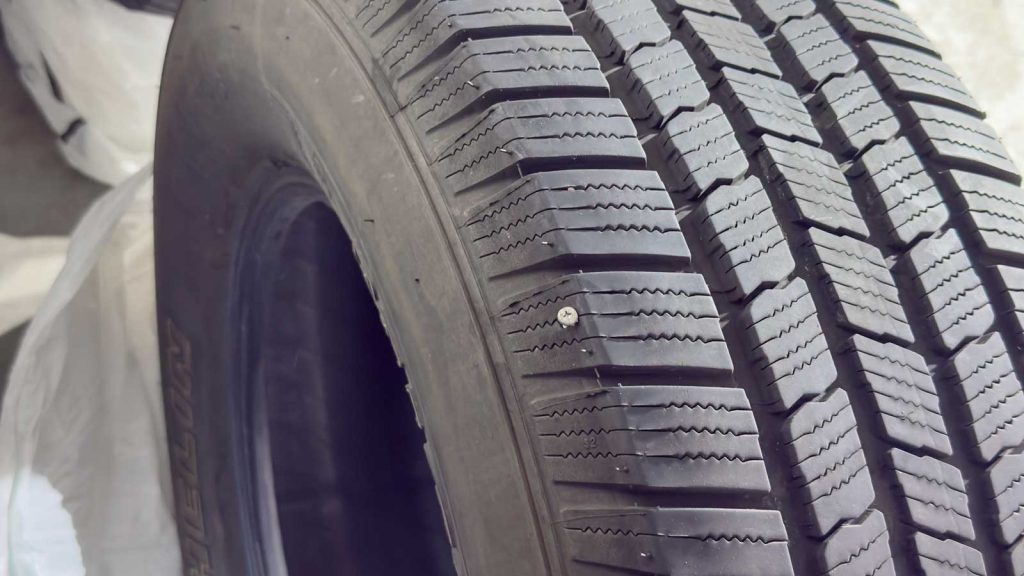
- Frequent Air Loss or Punctures: If you air up a particular tire frequently, it's a sign that the tire may be compromised. It could be a slow leak from a tiny puncture or a poor seal. Some punctures (like a nail in the tread) can be repaired, but the tire might need replacement if the puncture is in the sidewall or if you've had multiple repairs. Also, if a tire was driven while very low or flat, it could have internal damage (even if repaired later). Don't continually drive on a tire that won't hold air – get it checked. Sometimes, the best course is a new tire rather than risking a sudden flat or blowout.
- Vibration or Handling Issues: If you feel a constant vibration or thumping that wasn't there before, and you've ruled out issues like wheel balance or alignment, it could be a tire problem. A tire might have a separated belt or other internal damage that isn't visible outside, which can cause vibration or wobbling. If your car suddenly starts feeling rough or unstable and you suspect the tires, have them inspected. Persistent vibration can also accelerate tire wear. In many cases, if a tire is causing a lot of vibration due to internal issues, you'll need to replace it. Likewise, if the car feels like it's not handling or gripping as well as it used to (and you've eliminated other causes), worn-out tires could be the culprit.
If any of these signs apply to your tires, don't delay addressing them. Tires are critical to safe driving; running on bad tires is not worth the risk. New tires can be a significant expense, but consider it an investment in your safety.
How to Choose the Right Tire
Choosing new tires can feel overwhelming with all the brands and models, but it boils down to a few key considerations. Here's an intro-level overview of how to pick the right tires for your car (we'll provide a full tire buying guide with more details):
Know Your Vehicle's Requirements
Start with your car's specs. The manufacturer provides recommended tire size, load rating, and speed rating for a reason – the vehicle was designed with those in mind. You can find this information in the owner's manual or the tire information sticker (usually on the driver's door jamb).
Make sure any tire you consider matches these critical specs (for example, if your car calls for 215/60R16 95H, get that size and equal or higher ratings). It's okay to go above the speed or load rating (e.g., using a V-rated tire instead of H), but do not go below the recommended ratings.
Also, stick to the same size unless you have a specific reason to go up or down (and if so, do so with expert guidance). Using an incorrect tire size or a tire that can't handle your car's weight/speed can lead to handling issues or even failures. So, the right tire fits your car's requirements first and foremost.
Consider Your Driving Conditions
Consider the typical weather and roads you encounter. Do you live in a region with snowy winters, or is it warm year-round? Do you mainly drive on highways, city streets, or venture off-road? Matching your tires to your climate and usage is key. For example:
- If you face winter snow and ice every year, you should have a set of dedicated winter tires for those months (for superior grip in cold conditions) and all-season or summer tires for the rest of the year.
- Summer performance tires could improve your handling if you live in a hot, dry climate, drive a sporty car, or enjoy spirited driving.
- If you want one set of tires to do it all and your winters are moderate, all-season tires are the convenient choice (they handle a bit of everything, though they won't match a true winter tire in snow or a true summer tire in aggressive handling).
- For those who often drive off-road or on rough trails, an all-terrain or mud-terrain tire (for heavy off-road use) will be more durable and grippy than a typical highway tire. On the other hand, if your driving is 100% on-road, an all-terrain tire isn't necessary, and a highway or touring tire would be quieter and smoother.
- Consider the typical rain in your area, too – some tires are particularly good on wet roads (look for high traction ratings or designs for wet grip if you get a lot of rain).
- Choose a tire that suits the worst conditions you routinely encounter; that way, you'll be covered for those days when it counts. If you're mostly just commuting on paved roads in fair weather, you can choose a comfortable touring or performance tire, depending on your preference.
Match Your Driving Style and Priorities
Be honest about what kind of driver you are and what you expect from your tires. Some factors to consider:
- Do you prefer a comfortable, quiet ride? If so, look for tires marketed as touring or grand touring tires. These are often designed for comfort and long tread life. They may not have the sharpest handling, but they're ideal for everyday driving and road trips.
- Do you have a sporty car or love taking corners fast? Then, you lean towards performance tires (summer or high-performance all-season tires). These will give you better grip and responsiveness at the cost of slightly lower tread life and a firmer ride.
- Are you concerned about tread life and value? Check the treadwear ratings and warranties to get the most miles out of a set of tires. Some tires are built to go 70,000+ miles. Remember, a harder long-life tire might not grip quite as well as a softer one – it's a balance.
- Fuel economy can even be a factor – some tires are labeled low rolling resistance (often found on hybrids or eco-focused models). They can save some fuel, but usually with a small trade-off in grip.
- Load and towing: If you often carry heavy loads or tow a trailer (especially for trucks), get tires with the appropriate load rating (like LT tires if needed) and perhaps tires designed for trucks/SUVs with tougher construction.
- Ultimately, there's no single “best” tire for everyone. It depends on what you need and care about. Make a short list of priorities (safety in wet weather, long life, quiet ride, sporty feel, etc.) to guide your choice. Tire manufacturers usually categorize their products (touring, performance, winter, all-terrain, etc.), which helps narrow them down.
Replace in Pairs or Sets
When it is time to change tires, replacing all four at once is generally recommended if they're all worn. This ensures consistent traction and handling on all corners of your car. If you can't do all four, at least replace tires in pairs on the same axle (both fronts or rears together) so that handling isn't unbalanced. For example, putting two new tires on the rear and two older ones on the front (or vice versa) can affect how the car responds, especially in wet conditions. New tires on one end and worn on the other can cause instability. So, budget for a full set for the best and safest results. If you're mixing new with old, generally put the new tires on the rear axle for stability (this is a common recommendation to reduce the chance of the car spinning out).
Do Your Research & Ask for Advice
Many tire brands and models exist. Once you know your desired size and type, you might find multiple options that fit the bill. Read reviews (on tire retailer websites or consumer reports) and consider factors like price and reputation. Spending more on a well-reviewed tire from a reputable brand (Michelin, Goodyear, Bridgestone, etc.) can pay off in performance and longevity. However, some value-oriented brands offer good performance for less money. If in doubt, ask a trusted tire shop or mechanic – tell them your needs and budget, and they can recommend options.
Tire Basics: Bottom Line
In summary, choosing the right tire comes down to the correct size for your car, a type of tire that matches your climate and driving conditions, and a model that aligns with your driving preferences (comfort, performance, longevity, etc.). Take your time, and don't hesitate to consult resources (like our guides, reviews, or tire professionals). Remember, tires are an investment in your safety – the right ones will keep your car running safely and efficiently. Once you've chosen and installed the new tires, you can drive confidently, knowing you've got the appropriate “shoes” for your vehicle. For a step-by-step walkthrough of the tire buying process, check out our tire buying guide on the site.
Congratulations, you've made it through Tire Basics 101! By now, you should have a good foundational understanding of tires – what they are, why they're crucial, the different types, how to read their codes, and how to take care of them. This introduction is just the beginning. Feel free to explore our other articles for more details on each topic (from tire pressure tips to winter tire advice and more). With the knowledge you gain, you'll be better equipped to maintain your current tires and make smart choices when it's time to get new ones. Here's to safe and happy driving on a good set of tires!

